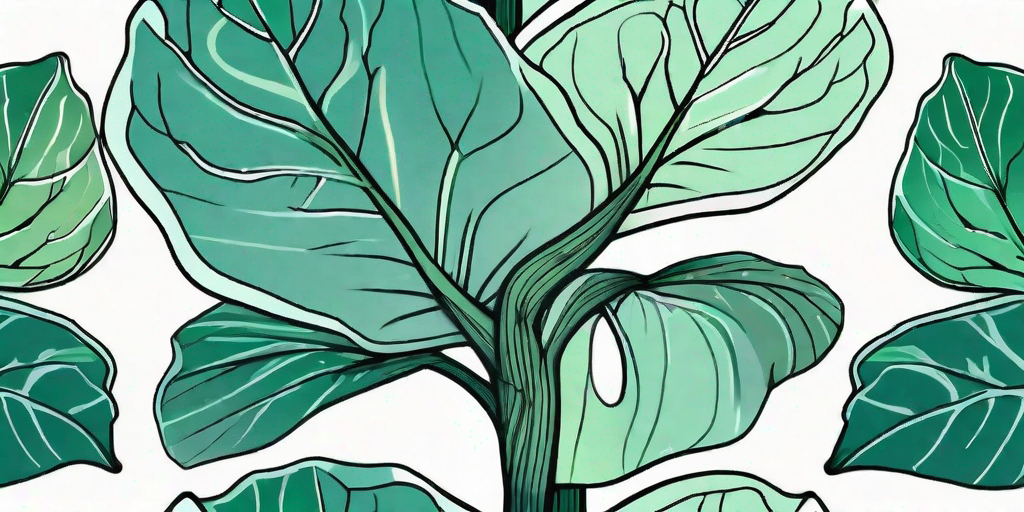
Welcome, green-thumbed enthusiasts and indoor jungle aspirants! Today, we're diving into the lush, leafy world of Fiddle Leaf Figs. These beauties are notorious for their finicky nature, but fear not! We're here to spill the tea on how to help your root-bound Fiddle Leaf Fig not just survive, but thrive.
The Root of the Matter: Understanding Root Bound Plants
Before we delve into the specifics of Fiddle Leaf Figs, let's first understand what being 'root bound' means. It's a term that sounds like something out of a horror movie, but it's actually a common phenomenon in the plant world. When a plant is root bound, its roots have filled up the entire pot, often circling and creating a dense web of roots. This can happen when a plant has been in the same pot for too long and has outgrown its space.
Now, you might be thinking, "That sounds like a nightmare for the plant!" Well, in some cases, you'd be right. However, some plants, like our beloved Fiddle Leaf Fig, can actually benefit from being a bit root bound. It's like they enjoy the cozy, cramped quarters - the plant equivalent of a studio apartment in New York City, if you will.
Why Fiddle Leaf Figs Love Being Root Bound
So, why do Fiddle Leaf Figs seem to thrive in these conditions? Well, these plants are native to the tropical rainforests of West Africa, where they grow in nutrient-rich but well-drained soils. Being root bound mimics these conditions, as the dense network of roots helps to prevent waterlogging, which Fiddle Leaf Figs absolutely detest.
Moreover, being root bound can help to control the size of the plant. If you've ever seen a Fiddle Leaf Fig in the wild, you'll know they can grow up to 50 feet tall! By keeping them a bit root bound, you can maintain a more manageable size for your indoor jungle.
Signs Your Fiddle Leaf Fig is Root Bound
Now that we know why Fiddle Leaf Figs might enjoy being root bound, let's look at some signs that your plant might be in this state. The most obvious sign is when you see roots growing out of the drainage holes of the pot. It's like your plant is trying to make a break for it!
Other signs include slowed growth, yellowing leaves, or the plant becoming top-heavy. If you notice these signs, it might be time to consider if your Fiddle Leaf Fig is happily root bound or if it's time for a pot upgrade.
How to Care for Your Root Bound Fiddle Leaf Fig
Alright, now for the juicy part - how to care for your root bound Fiddle Leaf Fig. Here are some tips to keep your leafy friend happy and healthy:
- Watering: Fiddle Leaf Figs prefer their soil to dry out a bit between waterings. Remember, they hate waterlogged soil! So, wait until the top inch of soil is dry before watering again.
- Light: These plants love bright, indirect light. Too much direct sunlight can scorch their leaves, while too little light can stunt their growth.
- Fertilizing: During the growing season (spring and summer), feed your Fiddle Leaf Fig with a balanced houseplant fertilizer every month. In the fall and winter, you can cut back to every other month.
- Repotting: If your Fiddle Leaf Fig becomes too root bound, it may start to show signs of stress. In this case, it might be time to repot into a slightly larger pot. But remember, they like being a bit cozy, so don't go too big!
Frequently Asked Questions
How often should I repot my Fiddle Leaf Fig?
Generally, Fiddle Leaf Figs should be repotted every 1-2 years. However, this can vary depending on the size of the plant and the pot.
Can being root bound kill my Fiddle Leaf Fig?
While being root bound can cause stress to the plant, it's unlikely to kill your Fiddle Leaf Fig if properly cared for. Remember, these plants can actually thrive in slightly root bound conditions!
What type of soil is best for Fiddle Leaf Figs?
Fiddle Leaf Figs prefer a well-draining soil mix. You can use a standard potting soil mixed with some perlite or coarse sand to improve drainage.
Conclusion
So there you have it, folks! The secret to helping your root bound Fiddle Leaf Fig thrive and flourish. Remember, these plants are a bit like Goldilocks - they don't like their conditions too loose or too tight, but just right. With a bit of care and attention, your Fiddle Leaf Fig can thrive in its cozy, root bound home.
So go forth, plant parents, and may your Fiddle Leaf Figs grow lush and tall (but not too tall, we don't want a Jack and the Beanstalk situation on our hands!).















